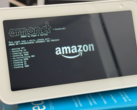Vine is back in spirit and archive, but this reboot is less about virality and more about keeping things human-made. DiVine, the new spin on Vine, arrives with a mix of nostalgia and a pointed anti-AI stance, backed by former Twitter co-founder Jack Dorsey and rebuilt by early Twitter engineer Evan Henshaw-Plath, who goes by ‘Rabble’. The app revives the six-second looping format, but it also does much more than just opening the old Vine archive: it promises a distinctly human-first feed for future content.
Henshaw-Plath says the team reconstructed the archive from a community backup, and DiVine now hosts roughly 150,000 to 200,000 recovered videos from about 60,000 original creators, a “good percentage” of the platform’s most popular clips. Original Viners can request their accounts and reclaim or remove content, which the team says keeps creator ownership front and center.
The platform will also flag suspected AI content and block uploads it judges to be synthetic or generative, combining device-provenance checks and verification tooling from the Guardian Project to confirm that a clip was recorded on a real phone. The founders are framing this as a corrective to the wave of AI slop filling timelines elsewhere.
The tech stack is deliberately decentralized, too, built on the Nostr protocol so anyone can spin up a relay or a media host, and the code is open source. Dorsey’s nonprofit ‘and Other Stuff’ provided funding to demonstrate what permissionless social can look like. That architecture is pitched as a hedge against the corporate algorithmic gardens that made the original Vine unsustainable in its old form.
Reconstructing old Vine content wasn’t trivial, Rabble admits; the archive came as large binary files and required months of scripts to extract usable media and metadata. “So basically, I’m like, can we do something that’s kind of nostalgic?” he told TechCrunch, and that nostalgia carries a practical edge, because the restoration includes views, a subset of comments, and ways for creators to verify ownership.
Early reactions are mixed to say the least. Some corners of X and subreddits welcomed the return, others bristled at yet another Dorsey-backed experiment, and questioned whether a small, curated app can survive where scale drove other platforms. There is, however, muted skepticism about growth and the challenge of monetizing without the advertising machines that power TikTok and YouTube Shorts; DiVine is leaning into tipping, micropayments, and a boutique creator economy rather than chasing mass virality.
Whether creators actually reclaim accounts at scale and whether a decentralized feed can attract both users and developers are yet to be seen. For now, DiVine is a tidy experiment, a nostalgia engine, an anti-AI statement, and a reminder that human-made content still has cultural currency.
DiVine is currently running a mobile app waitlist on-site, worth checking out if you are interested in being one of the first users of an application that could one day have the traction its predecessor did in its heyday.


















